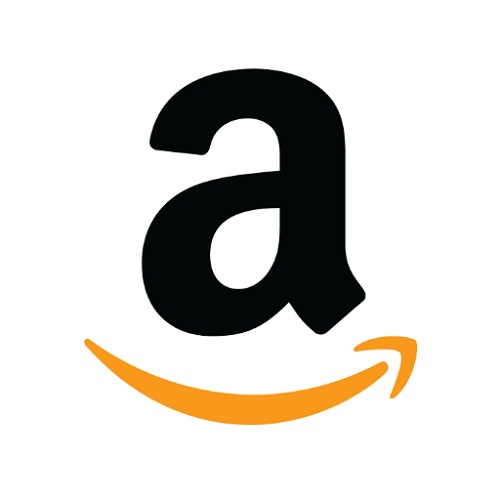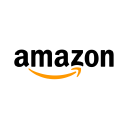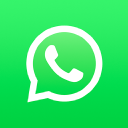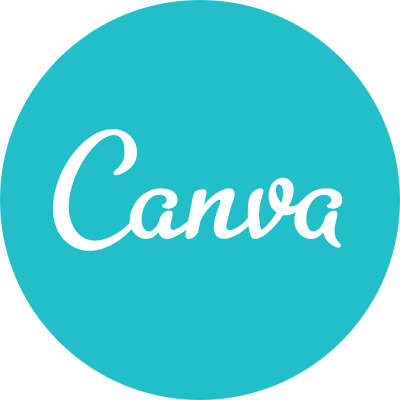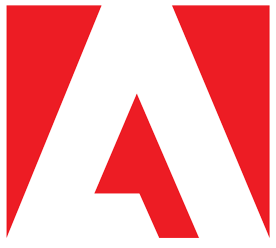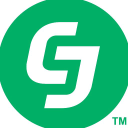How A High-School Dropout Started A $150K/Month Online Courses Company
Note: This business is no longer running. It was started in 2014 and ended in 2024. Reason for closure: Shut down.
Hello! Who are you and what business did you start?
My name is Adam Tal, I’m a high school drop out and an ex-musician, and I started an online education business in Israel, which has turned into a movement and which I’m now considering taking worldwide.
Our 2 flagship courses teach “money hacking” and “equity hacking”, our philosophy for building online businesses and online assets respectively. While our original idea was to teach marketing to SMB’s, we realized that by breaking some of the most revered rules of small business marketing, we were able to do something bigger.
Today our community is a unique fusion of so many kinds of people - entrepreneurs, employees, work-at-home moms & dads, teenagers and more, and our products change their lives by allowing them more freedom of choice when it comes to how they make a living.
We have over 100,000 active subscribers and followers, as well as just over 7,000 students who took at least one online course. In the past 5 years, we’ve generated over 21,000,000ILS, which is roughly 6 million dollars, with profit as high as 45% in some of those years.

What's your backstory and how did you come up with the idea?
I’ve never been able to “fit in” anywhere, which was a problem way before I dropped out of high school - my mom says I was even thrown out of kindergarten…
That made it hard for me to keep a job or dedicate myself to projects. In retrospect, it makes perfect sense, as I know now that I’m an introvert, and suffer from Cyclothymia, which is a “lite” form of bipolar, as well as ADHD.
But before being diagnosed, I just thought something was wrong with me, and that I might be the only person in the world who can’t keep a deadline, or that I was “lazy” on days that I couldn’t get out of bed or make decisions.
Naturally, whatever job I had, I suffered like hell, and I thought the only solution was to be self-employed, only to find out it was worse:
Being self-employed is like being employed by the worst person ever: yourself. You’re rarely a good boss, and rarely a good employee, and on top of that, you have 10-20 clients who are also your bosses.
I started having panic attacks and wasn’t able to work at all. I managed to pick myself and drag myself out of bed for an hour, maybe 2-3 hours at most, then I would crash.
But I wasn’t ready to give up. I thought the only way to free myself from the pain would be making a lot of money, and I refused to believe that there’s no way for me to make a lot of money. So my solution was to make a list of things I’m willing and am able to do for money, and things I’m not willing or not able to do.
I decided that I need to find a way to make money that doesn’t require any of the following:
- Getting out of the house
- Talking to people
- Meeting deadlines
- Working more than 3 hours per day
(basically, anything that triggered a panic attack).
…and after trying out tons of things I’ve stumbled upon affiliate marketing - where you grab an affiliate link for a product, get traffic to it, and get paid a commission for sales generated through your link.
It took a while, but through trial and error, I was able to create Google & Facebook ads that cost me less than the commissions I was being paid. I was pretty broke at the time, so I decided to cap my risk at $5 per day, and kept at it for a few months until one day investing $5 in ads generated $6 in revenue, then $10, then $20, and so on.
I was then just a matter of scaling, and before I knew it m ads were turning a daily profit of about $1,000. In less than a year, I’ve made what I consider “my first million”, in Israeli shekels (roughly $300,000 at the time if I remember correctly).
Life was great.
My only job was to tweak my ad campaigns every morning, and I had tons of free time. When I felt like working - I could, but if I took a 3-week vacation - I had no boss or any clients that would say anything.
Then I realized two things:
- A lot of people deserve to know about this “hack”.
- What if it doesn’t last forever?
I decided it’s time to build a “real” business that I have more control over, and decided a good idea would be to teach other people what I know.
Take us through the process of designing, prototyping, and manufacturing your first product.
Creating online courses is pretty easy to start, which is also the achenes heel of this business, due to the low entry barrier. What I did know was that I took the term “MVP” SERIOUSLY.
This is crucial, because for more people, what they consider to be an MVP, is not really the minimum viable. I didn’t want a “lean” business, I wanted an “anorexic” business. I wanted to keep the same lifestyle affiliate marketing allowed me, with more control of the products, pricing, etc, but I didn’t want to get into expensive production, customer service, etc.

I created the tutorials using screen capture software and filmed the marketing videos with my phones’ selfie camera.
I added a 30-day money-back guarantee so that my customer support would just be hitting the “refund” button for wherever wasn’t happy for any reason. In my marketing, I actually said: “My customer service sucks, so if that’s important to you and you’re willing to compromise on the quality of the info you’re buying - look elsewhere” (obviously we made it great further down the road).
I only used PayPal to receive payments and created an ugly interface where the videos were presented. I used Youtube to host my videos because it’s the fastest and works for everyone. I spent way more time designing the courses and training programs so that I could spend less time filming and editing.
My costs were pretty close to zero: $7/mo hosting, PayPal’s percentage of sales, and some software. I didn’t spend any money on marketing, relying instead on JV’s and collaborations to generate mailing list subscribers and convert them.
Describe the process of launching the business.
For the first course, what I did was contact as many business owners as I could find out who had a list of customers or a newsletter.
I created a “launch” sequence, a bunch of free training videos I was giving away for free, and generated a poor man’s version of an “affiliate link”, using a hidden form field in my leading landing page’s opt-in form.
I asked all those business owners to mail out their uniquely generated link to their list on the same day and promised them 50% of any sales generated from their subscribers within 1 month.
Be obsessive about trying to make money before spending any money.
The first time I did this, I generated a list of about 5,000 subscribers, and about $10,000 in sales, of which 50% was paid to my affiliates. For me, it was great, $5,000 in profit, and 5,000 subscribers I could market to. The next time I did this, I generated about $70,000 and another 5,000 subscribers.
All in all, I think my biggest lesson was - try your hardest to generate income BEFORE you spend any money. Most entrepreneurs consider it impossible or think that “it doesn’t work in MY business”, but it seems to me that it’s just a limiting belief you need to get rid of.
Funny enough I was influenced by watching a documentary called “no impact man” that has nothing to do with entrepreneurship.
It follows a guy who was trying to have zero impact on the environment while living in Manhattan. He started out by giving up Starbucks, moved on to grow his own food, and ended up giving up things like electricity, etc.
I sort of realized you can always push further a little bit more than you thought, so when it comes to being “lean”, you can always be leaner.
Since launch, what has worked to attract and retain customers?
Well the two things I think we did well, was:
- Building a mailing list based community, and investing in the relationship with that community.
- Focusing on our students RESULTS rather than customer satisfaction.
I’ll get to the first one in a bit, but I think the second one is more unique to our business and is a key to our success.
Most business owners realize at a certain point that no matter how good you are, there are always gonna be some customers that you can’t satisfy. We realize this and move on, learning not to take it too hard. But we never consider the flip side of this, because we don’t like thinking about it: no matter how much you suck, there are gonna be customers that have low standards and like you.
So while we learn to ignore criticism, we tend to embrace the compliments. I decided to ignore both, and just focus on providing results. If a customer sent us a thank you letter saying a course was really good, our answer would be: “Thanks, but what did you do with your newfound knowledge?”
Focusing on results made our business so much better: our courses were better because while competitors were trying to create perceived value by inflating their courses, we kept our courses short and sweet, giving our students time to actually do things and get results.

The first thing I promised to get back to the email list. It’s funny because I remember in 2014 people already said email marketing is dying, Gmail added promotion tabs, etc, but we’re still pulling in 6 figures a month from the lists we’ve built, and we can go months without spending any money on marketing.
We keep it lean here as well, focusing on results: no fancy templates, designs, etc, just good content. When you do that, it doesn’t matter if your email ends up in the “promotions” tab or even the spam folder - when people make a habit of reading your stuff, they will actively find your emails.
How are you doing today and what does the future look like?
In order to understand our future, you need to understand what the actual impact on our customer’s life is. We live in times where the middle class is disappearing. millennials keep complaining about the costs of living, but honestly, it’s a problem not just for them.
Early on we made a choice to break to crucial rules of marketing:
- Rather than focusing on an easy-to-convert target audience (like SMB’s or entrepreneurs), we chose to talk to “everybody”. A big no-no in marketing.
- We decided to educate the uneducated and go into an almost non-existing market at that time.
Both those decisions paid off, but more importantly, what it means is that we thought “regular” people - who have zero experience and zero affinity to entrepreneurship - to build businesses. Smart businesses, lean businesses.
Not all of them became millionaires (some did), but for a lot of them, increasing their monthly income by 20% without leaving their job, or making a little money on the side on maternity leave…
It changed their lives. It gave them hope, it changed their situation from being in debt to being able to afford vacations, etc. That’s the key to their loyalty, and it became the “why” behind our business. Our community today is the best source for talent, joint ventures, human resources, connections, and more.
We’ve become a phenomenon in Israel, with our students being interviewed on TV, etc. And our goal is to now become a household name in Israel, and start spreading out overseas and see if we can recreate our unique methods in other markets where people need more ways of making a living remotely.
Through starting the business, have you learned anything particularly helpful or advantageous?
I started with a bootstrapped, lean business, and on my way to making it a “real” business, that can keep going without me, I’ve made a lot of mistakes.
I was really proud of myself for realizing that while I might be creative and ambitious, I’m not a good manager. I hired a CEO and started building a management layer in the company.
What I realized, however, is that in a similar way to what happened with WeWork, I had too much control over the management, and is the founder of the company, I always had my way.
What some people consider to be an MVP is not really the minimum viable. I didn’t want a “lean” business, I wanted an “anorexic” business.
While we move away from being “lean”, the company was still running too much like a high school dropout’s business….
I’ve only recently realized how much influence I still had, and started trying to figure out where I actually contribute to the company, as opposed to just interfering. I’ve learned that a company needs strong leadership and strong management so that things work smoothly.
At this point, I’m actually considering getting an investor or two on board, which will accomplish the two main goals we have of expanding rapidly, as well as keeping the company on the right course by having accountability to external entities.
What platform/tools do you use for your business?
We’re keeping it simple. We’re using a local email delivery tool, which is kind of like mailchimp to run our mailing list, and we try to keep as simple as possible.
We’ve recently started using Monday as a project management tool.
I still use Screenflow if I need to create new training materials, and iPhones to create marketing materials.
We use Dreamhost to host our web pages and a VPS server for our courses platform.
Nothing exciting, I guess. My minimalistic philosophy is “if it doesn’t come with your phone/laptop, find a way to cope without it”.
What have been the most influential books, podcasts, or other resources?
I love reading biographies, documentaries and following public companies.
A company like Disney, for example, is such a great place to learn from since there’s so much material, everything is documented since it’s a public company, and you can find so many different opinions about it from 20-30 years back and ever earlier.
That way you really get a 3-dimensional story you can explore, and learn from on a much deeper level than a book or a podcast.
I believe a lot of mistakes in business are made by learning from the wrong places and filling your brain with ideas or “facts” that are just wrong. So a 3D story is the only way to try and verify the information.
I believe books are sometimes “expensive” shortcuts because you learn something someone else researched, but oftentimes the research isn’t good enough and you end up acting on low-quality information to make critical decisions.
Advice for other entrepreneurs who want to get started or are just starting out?
Think lean, then think “can it be even leaner?”. Question every part of the process and whether it’s really necessary, or just a story you’re telling yourself in order to postpone action.
Be obsessive about trying to make money before spending any money.
Stop reading. You learn more from doing, especially from failing, that you will from a book, and most books are read at the wrong time. You’re filling your head with tons of irrelevant information, and worse: rules and beliefs that have nothing to do with the reality of YOUR business.
A good example would be reading a (great) book like “built to last” before you even have your first employee. You start thinking about leadership and organizational culture while you should be focusing on getting your first client.
I’ve developed a habit of reading summaries of books on Blinkist, then only reading the actual book if I decided it would help me with the actual problems I’m dealing with now. Being extremely frugal with your TIME is crucial, and you should be optimizing the value you’re generating per minute to get the most of it if you want to succeed early.
Where can we go to learn more?

Download the report and join our email newsletter packed with business ideas and money-making opportunities, backed by real-life case studies.

Download the report and join our email newsletter packed with business ideas and money-making opportunities, backed by real-life case studies.

Download the report and join our email newsletter packed with business ideas and money-making opportunities, backed by real-life case studies.

Download the report and join our email newsletter packed with business ideas and money-making opportunities, backed by real-life case studies.

Download the report and join our email newsletter packed with business ideas and money-making opportunities, backed by real-life case studies.

Download the report and join our email newsletter packed with business ideas and money-making opportunities, backed by real-life case studies.

Download the report and join our email newsletter packed with business ideas and money-making opportunities, backed by real-life case studies.

Download the report and join our email newsletter packed with business ideas and money-making opportunities, backed by real-life case studies.
